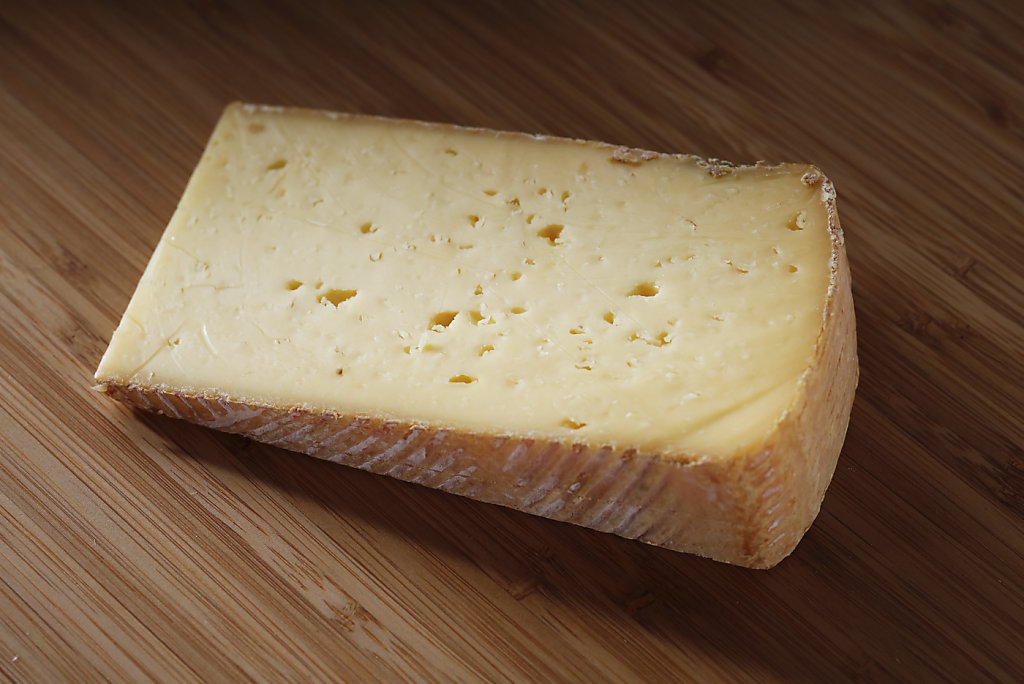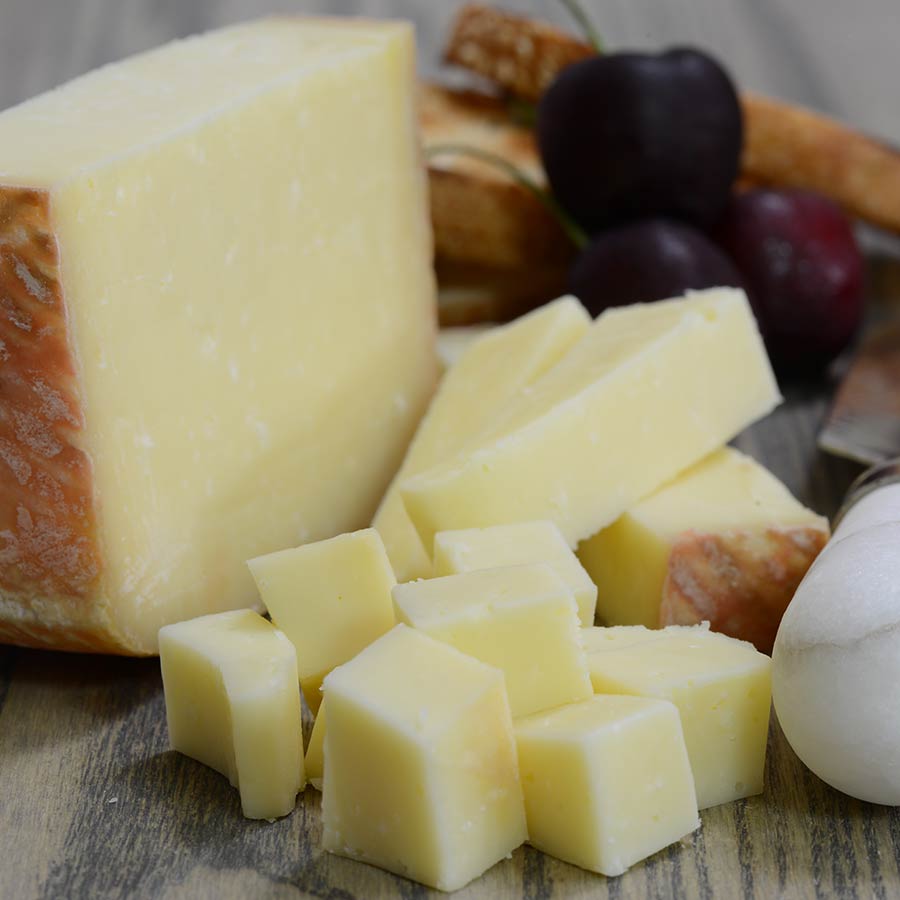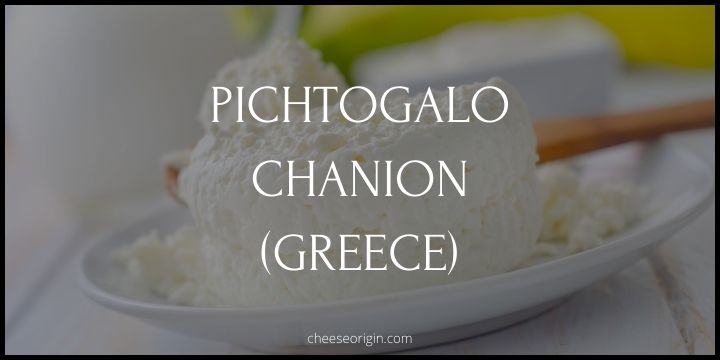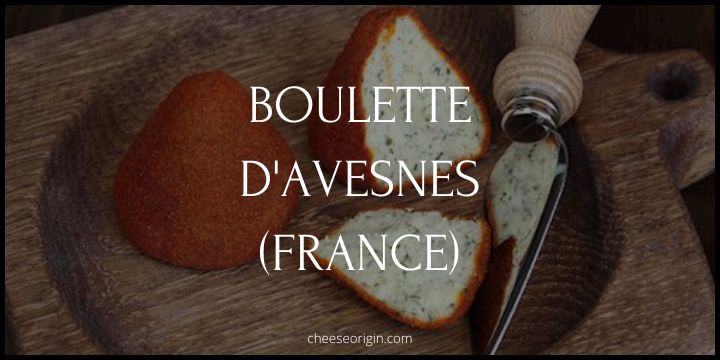What is Pawlet Cheese? A Unique Cheese from Vermont

Meet Pawlet Cheese, a culinary gem hailing from the lush pastures of Vermont. This exquisite cheese, crafted from rich Jersey cow’s milk, boasts a semi-hard texture and a flavor profile that is both complex and perfectly balanced. With its origins rooted in Swiss-style washed-rind cheeses, Pawlet offers a unique take on this traditional process, resulting in a cheese that is undeniably American, yet holds a touch of European charm.
Its creamy consistency, nutty undertones, and subtly piquant finish make Pawlet a versatile delight, equally enjoyable on a charcuterie board or melted over your favorite dish.
Quick Facts About Pawlet Cheese
| Quick Facts | Details |
|---|---|
| Origin | Pawlet, Vermont, United States |
| Type | Semi-hard, cow’s milk cheese |
| Texture | Creamy and dense with occasional small holes |
| Taste | Mildly nutty with a sweet, buttery flavor; becomes more earthy and piquant as it ages |
| Rind | Natural, washed rind |
| Color | Pale yellow |
| Milk Source | Jersey cow’s milk |
| Ageing | Aged for 3 to 5 months |
| Producer | Consider Bardwell Farm |
| Pairings | Pairs well with full-bodied red wines, crusty bread, fruits like apples and pears, and charcuterie |
| Serving Suggestions | Ideal for melting, or served on a cheese board with honey or fruit preserves |
| Awards | American Cheese Society Winner 2019 |
What is Pawlet Cheese?

Pawlet cheese, a semi-hard, Toma-style delight, originates from the idyllic landscape of Pawlet, Vermont. Crafted by the skilled cheesemakers at Consider Bardwell Farm, this artisanal gem embodies the rich, pastoral essence of the Green Mountain State.
The journey of Pawlet Cheese begins with the lush, organic pastures that are home to Jersey cows. The milk obtained from these cows, renowned for its high butterfat content, forms the creamy foundation of this exquisite cheese. The result is a pale-yellow delicacy that offers a tantalizing taste experience.
With a texture that’s creamy and dense, punctuated by occasional small holes, Pawlet cheese invites you on a sensory exploration. The flavor profile is a symphony of nutty sweetness, underscored by a buttery richness that deepens with age. As it matures, Pawlet develops a more earthy and piquant edge, adding layers of complexity to its taste.
A natural, washed rind encases this cheese, contributing to its unique character. When it comes to serving Pawlet cheese, its versatility shines. Whether you’re melting it over a gourmet burger, slicing it onto a crusty baguette, or pairing it with full-bodied red wines on a cheese board, Pawlet is a crowd-pleaser.
In recognition of its exceptional quality, Pawlet cheese was awarded by the American Cheese Society in 2019. Yet, awards aside, the true testament to Pawlet’s allure lies in every bite of this Vermont specialty. From its humble beginnings on a Jersey cow farm to its star status on cheese boards across the country, Pawlet cheese is a testament to the art of cheesemaking.
What Does Pawlet Cheese Taste Like?
Pawlet cheese has a creamy, buttery paste with a distinctive herbal taste and a hint of funkiness, providing a unique sensory experience. This semi-hard Alpine tomme-style cheese also features a deep nutty flavor that balances its rich, buttery essence.
The rind of Pawlet cheese lends an earthy, barnyard flavor that is most apparent near the surface. As the cheese matures, it develops a pungent aroma, further enhancing its character. The flavors of Pawlet cheese are rounded, encompassing notes of grass, herbs, and flowers, reflecting its organic origins.
Pawlet Cheese Tasting Notes
- Texture: Semi-hard, creamy, and dense with occasional small holes. Excellent melting cheese.
- Color: Pale yellow, reflective of the rich Jersey cow’s milk used in its production.
- Aroma: Mild aroma that grows more pungent with age, offering a hint of the organic pastures where the cows graze.
- Flavor: Starts mildly nutty and sweet, reminiscent of butter. As it ages, the flavor evolves to reveal earthy and piquant notes.
- Rind: Natural, washed rind that contributes an earthy depth to the overall flavor profile.
10 Best Pawlet Cheese Substitutes
| Substitute | Description |
|---|---|
| Fontina | An Italian cow’s milk cheese. Semi-soft, creamy, and has a nutty flavor similar to Pawlet. Melts well. |
| Gruyère | A hard Swiss cheese known for its sweet yet slightly salty flavor. Ideal for melting. |
| Comté | An Italian cheese with a strong aroma but a mild taste. Its fruity tang and meltability make it a good substitute. |
| Taleggio | An Italian cheese with a strong aroma but mild taste. Its fruity tang and meltability make it a good substitute. |
| Jarlsberg | A Norwegian cheese with a sweet and nutty flavor. It’s semi-hard and melts easily. |
| Emmental | A medium-hard Swiss cheese. Known for its slightly fruity, nutty flavor and excellent melting properties. |
| Raclette | A semi-hard Swiss cheese. It has a very distinct aroma and flavor, and is traditionally melted. |
| Beaufort | A French cheese with a unique aroma and taste that is somewhat similar to Gruyère. Great for melting. |
| Muenster | An American cheese with a smooth texture and mild flavor. It melts well, making it a versatile substitute. |
| Provolone | An Italian cheese with a smooth texture and slightly tangy flavor. It melts well and can be used in a variety of dishes. |
What Pairs Well With Pawlet Cheese?

| Category | Pairs Well With Pawlet Cheese |
|---|---|
| Wine | Full-bodied red wines like Cabernet Sauvignon, Merlot, Pinot Noir, and also crisp white wines like Chardonnay, Sauvignon Blanc |
| Beer | Pale Ales, Lagers, Wheat Beers, Stout |
| Fruits | Apples, Pears, Grapes, Dried Fruits like Figs and Apricots |
| Bread/Crackers | Multigrain Bread, Baguette, Artisan Crackers, Sourdough |
| Charcuterie | Prosciutto, Salami, Soppressata, Chorizo |
| Nuts | Almonds, Walnuts, Pecans, Hazelnuts |
| Spreads/Jams | Fig Jam, Apricot Preserves, Honey, Quince Paste |
| Other Cheeses | Blue Cheese, Aged Cheddar, Gouda, Brie |
| Vegetables | Pickles, Olives, Roasted Red Peppers, Sun-dried Tomatoes |
| Desserts | Dark Chocolate, Cannoli, Tiramisu, Fruit Tarts |
Also read: Best Wine and Cheese Pairings: The Ultimate Guide
Also read:
- What is Bayley Hazen Blue? Decoding the Delight
- What is Bijou Cheese? The Jewel of Vermont Creamery
- What is Goat Cheddar? The Unique Twist on Classic Cheddar
- What is Burrata di Andria? The Creamy Heart of Italian Cuisine
- What is Montrachet Cheese? A Taste of Burgundy in Every Bite
- What is Prairie Tomme? A Taste of the Alpine in America’s Heartland
- What is Bloomsday? A Taste of Artisanal Mastery





